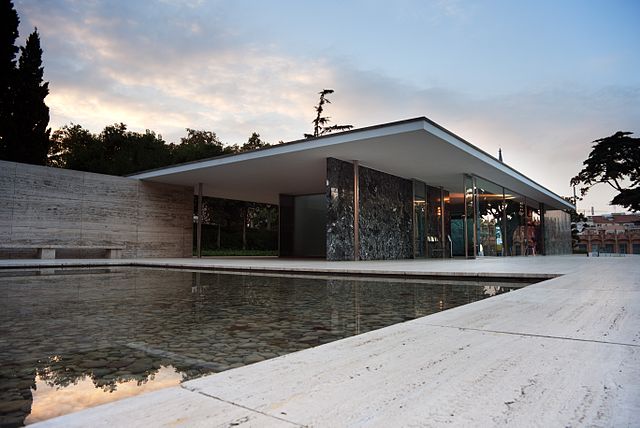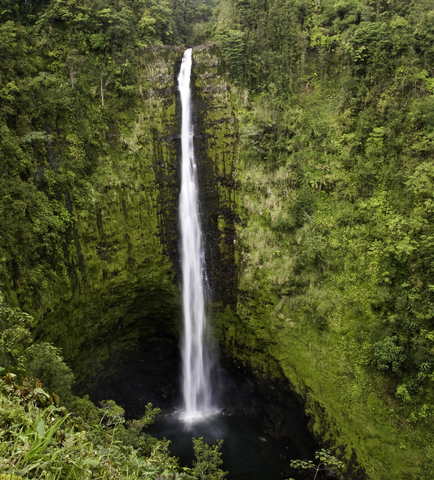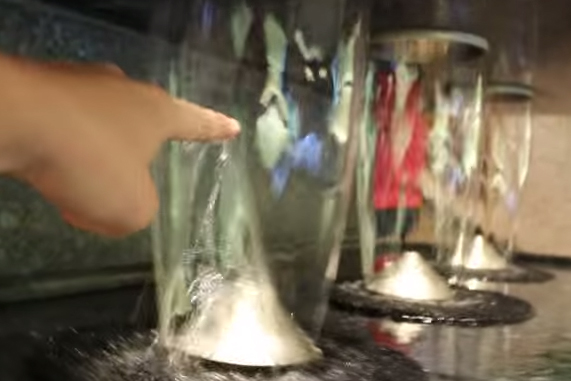Travelogue
Our early-summer trip to Yellowstone National Park was a revelation to me, pure and simple. As I related in my Travelogue for July 22 (click here), the thing that occurred to me is that the inspiration at Yellowstone comes less from
For most of my life, I've been lucky to live within easy driving distance of a bunch of great national parks. Yosemite, Sequoia, Joshua Tree - the names alone flood my mind with memories of towering waterfalls, raging rivers, incredible landscapes, amazing rock formations and campfires that couldn't quite keep the cold at bay. In all my visits through the years, I've seen these "neighborhood" parks as naturalistic-design laboratories, as settings in which careful observation influences the work, fills the spirit and send watershapers back to the drawing board with all sorts of general ideas that might be of use down the line. Conceptual and visual treats, in other words - the stuff of inspiration. Last month, my wife and I ranged a bit farther afield than usual, hopping a plane to visit Yellowstone National Park. I have to say that the experience completely altered my sense of what a "naturalistic-design laboratory" might be. In this one park, I saw more
I've been writing these Travelogues once or twice a month since 2011, and a request from a reader for information about a particularly famous watershape revealed a significant gap in our information base: To my astonishment, I recognized I'd never written about the Fountains of Bellagio, which is a bit embarrassing when you consider it's one of my all-time favorites.
I saw it for the first time while attending the Aqua Show more than a decade ago. I was staying down the street at the Luxor (accommodations, I must say, not quite up to the Bellagio's standard); after returning from an excessively fine dinner with some Genesis 3 friends, I decided a long walk would do me good.
I reached the Bellagio at about 10 pm without too many preconceptions: I'd heard about the place, of course, and had seen a couple photos, but I wasn't prepared for what I found.
I don't know how long I stood at the railing, moving from spot to spot to take in the scene from as many angles as I could, but I know it must have been at least an hour. The whole time, I kept thinking, "This is why I love what I do." The display was simply sublime, an experience that still makes me feel good about how much energy I've put into the advancement of watershaping as an art form.
I've been back at that same railing many more times through the years, loving every minute of it. What particularly impresses me now is watching the sheer joy in the faces of so many of the people alongside me: There are lots of cool watershapes in the world, but very few of them are transcendent enough to become communal celebrations the way this fountain does.
The Fountains of Bellagio are, of course, the work of the designers and builders at WET Design (Sun Valley, Calif.), and I've always considered this project to be among the greatest expressions of the watershaping arts in the history of the planet. For me, in fact, it's the first among the Seven Wonders of the Modern World (no matter what the other six might be). Other projects have come along to rival them, but these fountains deserve all the respect that comes with real trailblazing.
There's a lot to like about the original, including the excellent choreography, the thoughtful musical selections and the brilliant lighting program. My personal favorite detail, however, goes unseen and largely unheralded: It's the fact that the water comes from a well that had been used to irrigate a golf course abandoned when the Bellagio was built. Even with the jetting water and all that splashing in the middle of a desert, the fountains consume less water than the turf always did.
I do, however, have a quick, sad story to tell. My wife is a schoolteacher, and getting her to travel with me to trade show has been a rare treat. I persuaded her to come with me to Las Vegas some years ago because I knew that I was to be named Pig #8 or #9 by Genesis 3 and I wanted her to witness the ceremony. Afterwards, I took her to the Bellagio to see the fountain: It was a cold, blustery night, and when we finally reached the railing, we saw the basin covered in whitecaps and learned that the water show had been cancelled for the night.
I don't know if I'll have the chance to try again at sharing the Fountains of Bellagio with her, but for the rest of you, here's my edict: It's a trip worth making, an experience well worth sharing and a special event that makes going to Las Vegas a pleasure, every time.
For a unique behind-the-scenes perspective and some history, click here. To see one of the best possible combinations of music and fountain choreography, click here - and please stick with it to witness the aquatically pyrotechnic crescendo!
A few weeks back, I paid a visit to Santa Rosa, a city in the heart of California's Sonoma County wine appellation. I wasn't there to taste wine, surprising as that may seem. Instead, I went to visit with Jim Wilder, a regular WaterShapes contributor and fountain specialist who's spent his career working up and down the valley, quite often
Just recently, a business acquaintance suggested I would enjoy a meeting scheduled for a downtown Los Angeles hotel. I figured I'd go because the Museum of Contemporary Art is right down the street and I hadn't been there for a while. So off I went, braving rush-hour traffic, biting hard when I discovered it would cost me nearly $40 to park for the morning and doing my best to
Over the holidays this past December, we broke with family tradition and, instead of gathering around tree and hearth as we've done as a family every year since 1982, all of us headed to the Big Island of Hawaii for an entirely new sort of celebration. My wife and I had been there once before, staying at what was then the newly opened Hyatt Regency Waikoloa for a meeting of the National Spa & Pool Institute's Board of Directors. (I recall that Skip Philips was chairman at the time.) After that meeting nearly 25 years ago, Judy and I had taken several extra days and motored around the island at a leisurely pace, staying in tiny motels and spending most of our time
When I prepare my Travelogues, I always spend some time, usually midway through the process, looking at what's available on the Internet to support the basic observations I'm getting ready to offer. Often, for example, I'll confirm information I already have about designers or engineers or installers (and their clients), touching all the bases to get the details right. As important, I'm on the lookout for
I haven't called attention to many of what you might call "conventional" fountains in my Travelogues. You know what I mean: the standard sort of bowl fountains with modest flows, bronze sculptures and lots of patina. It's not that I haven't come across many that I like and admire during my travels; it's just that most of their stories seem a bit too similar.
In the case I'll discuss here, however, there's an odd tale of déjà vu to tell: Back in July of 1978, while I was in Rome, I sought out fountains just about wherever I walked around the city because it was so unbelievably hot. Even small fountains were islands of coolness under the intense Italian sun.
One of the fountains I encountered looked familiar when I crossed its path: The Fontana delle Tartarughe (seen above) wasn't s show-stopper by any means, but it was charming and cooling - and challenged me with the nagging sense that I'd seen it before.
Set where there had once been a fountainhead for the Roman aqueduct system, this one had been built in the 1580s as the collaboration of an architect, Giacomo della Porta, and a sculptor, Taddeo Landini. The creatures that lent the fountain its name were added about 80 years later during a restoration project; they were by either Gian Lorenzo Bernini (which would be exciting, as he was a truly great artist and architect) or by Andrea Sacchi, a renowned painter (but not anywhere close to Bernini's league).
My guidebook, long gone, doubtless told me all of this, and I'm certain the Bernini connection would've caught my eye. But what really grabbed me was the translation of tartarughe it offered: This was the "Fountain of the Tortoises" - and I had indeed seen it before, only the last time it had been in a small park on Nob Hill in San Francisco.
About four years before my visit to Rome, I'd spent a week in San Francisco, walking up and down hills and exploring everything I could reach on my happy 18-year-old feet. I'd been to Nob Hill and had walked through Huntington Park and had seen what turned out to be a reproduction (seen just above) of the Fontana delle Tartarughe that had graced the space since 1954.
It was all about the tortoises, both times. They looked a bit silly hanging out over the edge of the large fountain bowl, so when I saw them again in the same absurd posture in Rome years later, it triggered the memories and kicked up a curiosity that made me linger long enough that I checked my guidebook and saw that tartarughe translated to tortoise - and I knew in a flash where I'd see this before.
You can go to Rome to see the original, but to me the San Francisco version has almost as much going for it - other that 450 years of art history atop 2,000 years of Roman hydrological history, of course. Cool in either place, I'd say.





















